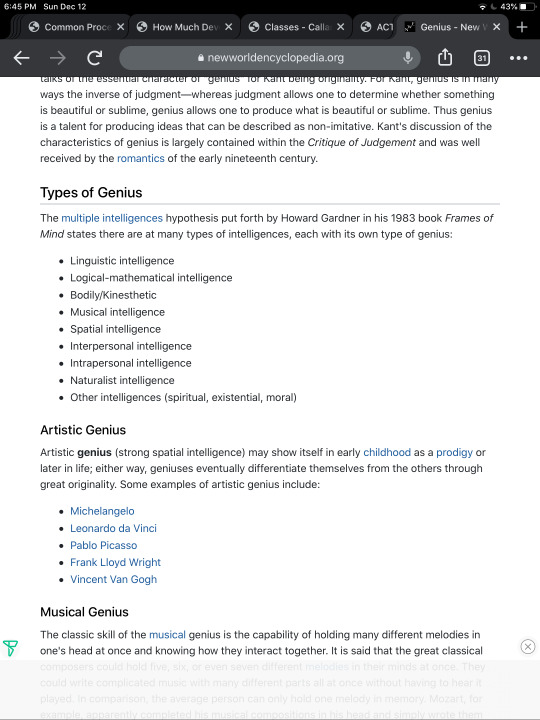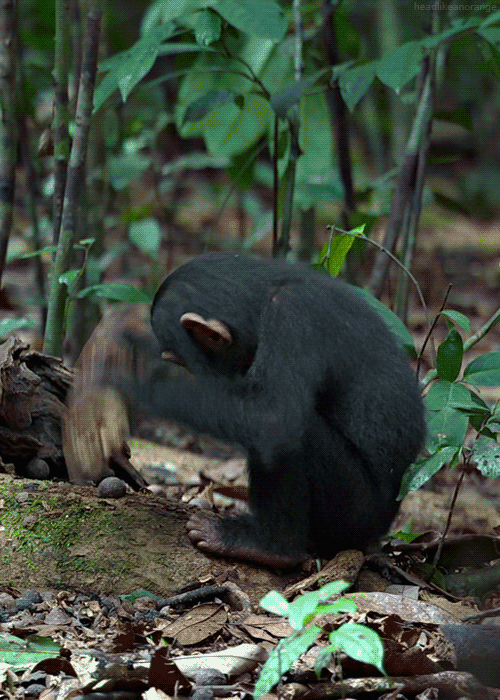#Spatial Intelligence
Explore tagged Tumblr posts
Text




Capsule Issue 4
#Capsule#Issue 4#magazine#Spatial Intelligence#Rei Kawakubo#DSM#Dover Street Market#Philippe Starck#Thomas Ruff:
4 notes
·
View notes
Text



#books#education#howardgardner#multipleintelligences#study#books and reading#educate yourself#spatial intelligence#emotional intelligence#musical intelligence#linguistic intelligence#interpersonal intelligence#thesagittarianmind
4 notes
·
View notes
Text
Psych Majors: Advice Needed
I'm looking for a spatial intelligence test suitable for U.S. 6th graders, preferably free. Recommendations? Thank you.
5 notes
·
View notes
Video
Contact Photography by Russell Moreton Via Flickr: russellmoreton.tumblr.com/archive Russell Moreton Winchester Discovery Centre 09:00am Wednesday 02 Oct 2013 to Thursday 31 Oct 2013 Russell Moreton is a visual fine artist working with alternative and historic photographic processes. He uses pinhole cameras for inquiry into architectural space, these initial perspectives are further collaged and rendered through the Cyanotype process. He is currently working in the library spaces, and aims to produce a series of working ideas/blueprints for display. Cost: Free Venue: Winchester Discovery Centre Telephone: 01962873603
#Winchester Discovery Centre#Wallspace Gallery#Russell Moreton#pinhole#photography#alternative photographic processes#spatial practices#cyanotype#text#site writing#surface#architectural#interior#time based#qualitative#research#strategies#subjective#site based#inquiry#fine art#practice#theory#spatiality#liminal light#architectural photography#spatial intelligence#history in space#built environment#human capability
1 note
·
View note
Text

types of intelligences
0 notes
Text
Nurturing Spatial Intelligence in Early Childhood: Making Space for Cognitive Growth
Greetings, wonderful parents! Ever noticed how your little one tries to stack their blocks, or how their eyes light up when they successfully complete a puzzle? That’s not just play – it’s the budding spatial intelligence in action! Spatial intelligence, one of Howard Gardner’s multiple intelligences, refers to the ability to visualize and understand the relationships between shapes, spaces, and…

View On WordPress
0 notes
Text
I'll never be the kind of person that knows how to back into a parking space tbh
12 notes
·
View notes
Text
Researchers in the emerging field of spatial computing have developed a prototype augmented reality headset that uses holographic imaging to overlay full-color, 3D moving images on the lenses of what would appear to be an ordinary pair of glasses. Unlike the bulky headsets of present-day augmented reality systems, the new approach delivers a visually satisfying 3D viewing experience in a compact, comfortable, and attractive form factor suitable for all-day wear. “Our headset appears to the outside world just like an everyday pair of glasses, but what the wearer sees through the lenses is an enriched world overlaid with vibrant, full-color 3D computed imagery,” said Gordon Wetzstein, an associate professor of electrical engineering and an expert in the fast-emerging field of spatial computing. Wetzstein and a team of engineers introduce their device in a new paper in the journal Nature.
Continue Reading.
#Science#Technology#Electrical Engineering#Spatial Computing#Holography#Augmented Reality#Virtual Reality#AI#Artifical Intelligence#Machine Learning#Stanford
53 notes
·
View notes
Text
I realized the Portal brainrot is too severe when I crossed the street with a truck missing me barely by an inch
21 notes
·
View notes
Text
Gonna be honest sometimes writing is just not a good medium to convey certain scenes that live in my head and that is why I forever wish I could draw. Like yes I can narrate the exact timing and pattern of dancing steps I can see my OT3 doing and who hands whom off to whom at which moment and it might even be well written but reading that is inherently a way different experience than just visually SEEING them do it.
I have plenty of obstacles that keep me from drawing which are part of why I focus on writing, and I'm mostly at peace with ny limitations (and I genuinely love to write), but the specific strengths and downsides of each medium are also very real. RIP.
Anyway closest I can probably get is to just drop the songs that do it to my brain and hope you get my vision lmfao. Will probably make a codobikin playlist at some point.
#fan stuff#fan works#writing#art#all my writing including more devils than shoulders basically has a secret soundtrack that helps me lay it out visually bc i have no#visual-spatial intelligence and most writers need at least a modicum of visual-spatial processing in order to create believable moments#i'm like using auditory intelligence to patch the gap somehow?#codobikin#codywan#obikin#codakin#codywalker#i will make codywalker i thing i SWEAR#anakin skywalker#marshal commander cody#cc 2224#darth vader#obi wan kenobi#st lucia#dancing on glass
16 notes
·
View notes
Text
"x is the smartest homestuck kid" "y is the smartest homestuck kid" what you call intelligence is an arbitrary measure decided by a society that wants to exploit your skills.
#mine#sorry i am just sick of posts like that and like#ppl unironically talking abt iq like it's a valid measure of something as nebulous as “intelligence”#sure it can reliably measure like. what. problem solving skills scaled by age or something??#i forget how it's calculated now#but it fails to account for things like.#i don't know. spatial intelligence.#ever heard of multiple intelligences theory#yeah. i dunno i'm just sick of it#there's also a layer of like. people deciding that “intelligent” is equivalent to “able to understand concepts taught in school”#which is ANOTHER biased and incomplete measure#sorry. done ranting now
2 notes
·
View notes
Text
Do Animals Think?
Logical intelligence!
Logical intelligence is the ability to use logic, analysis, and sometimes mathematics, to solve some kind of problem. This type of intelligence comes naturally to humans, and is the area in which our brains are best adapted.From an evolutionary perspective, logical intelligence helps a species to overcome obstacles. They might develop a tool that lets them access a food source, or invent a weapon which keeps them safe from predators.For a long time, tool-use was thought to be an exclusively human trait, but in the last few decades, it has been observed in a number of species. None of them can match the logical intelligence of humans, but these animals are capable of problem-solving, and some of them even use math.

Do Animals Think?
Emotional intelligence!
A useful definition of emotional intelligence was proposed in the 1990s: “the ability to monitor one’s own and others’ feelings and emotions, to discriminate among them, and to use this information to guide one’s thinking and actions.”This form of intelligence evolves in species that live in tight-knit social groups, where individuals who know how to read each other are more likely to survive and thrive. Humans are a good example of this, but they are far from alone.Magpies seem to hold funerals. Rats can make each other laugh. And there is mounting evidence that the brains of orcas are capable of emotions more rich and complex than anything a human could produce.


Spatial intelligence!
Spatial intelligence is the ability to think in three dimensions, and to visualize objects from different angles. This type of intelligence is essential for navigation, as well as recognizing shapes and patterns.This form of intelligence evolves in species that travel long distances, or negotiate difficult terrain. In terms of spatial intelligence, human brains are unable to compete with thousands of species around the world.Animals with high levels of spatial intelligence include birds and insects, which can fly at high speeds and migrate around the globe. Some animal brains can process infrared, and read magnetic fields. This allows them to navigate physical space in a way that humans cannot match.

Linguistic intelligence!
Linguistic intelligence is the ability to use and understand language. This type of intelligence involves speech comprehension and speech generation, which are slightly different skills.Like emotional intelligence, linguistic intelligence evolves in social species which benefit from sharing information. They might warn one another that a predator is coming, or describe the location of a source of food.

Humans excel at linguistic intelligence, but we are not the only species capable of language. Primates communicate using physical gestures, birds have a range of different songs, and whales speak using complex clicks called coda. Even insects are capable of language: some bees communicate by performing an expressive dance.
Memory
Memory is a type of intelligence which a number of species excel at. Memory can be divided into two categories: working memory and long-term memory.Working memory is the temporary storage of information. It lets us hold a few thoughts in our head for a moment, like the numbers in a sum, while we mentally find an answer. This ability is relatively rare in animals, but it has been observed in some primates and birds.

Long-term memory is when information is stored in the brain for extended periods of time. This is where animals come into their own, like the birds which remember the location of hundreds of food caches.
Do Animals Think?
Consciousness
The hardest aspect of intelligence to define, and measure, is the idea of consciousness. In 2004, a group of neuroscientists wrote: “Consciousness has not yet become a scientific term that can be defined.”In general terms, consciousness is usually seen as a state of self-awareness. Not just to think, but to know that we think. Not just to exist, but to know we exist. In evolutionary terms, it helps us to understand our place in society, and to know our own strengths and weaknesses.In animals, self-awareness is generally measured using an experiment known as the mirror test. If an animal recognizes its own reflection, it is considered self-aware. A handful of species have passed the mirror test, which suggests that consciousness is not unique to human brains.
Does animal intelligence matter?
An increased awareness of animal intelligence has major implications. If a species is capable of rich emotions and self-awareness, is it ethical to farm that animal species, or to keep it in a zoo?

In 2009, animal behaviorist Temple Grandin released a book called Animals Make Us Human. This book encouraged people to consider the emotional needs of animals, and make sure they never get bored, miserable or stressed.A better understanding of animal intelligence also changes our perception of ourselves. For thousands of years, we thought we were alone in our intelligence. If other species are capable of thought, does that change what it means to be human.
#animals#animal intelligence#emotional intelligence#linguistics#spatial#conciousness#memory#new blogger#blogger#today i learned#new blog#first post#hello tumblr
5 notes
·
View notes
Text
Location Intelligence Sri Lanka
Why Location Intelligence?
Unmatched Analytical Power
Location Intelligence enables advanced analytics that reveals patterns and trends in your data, allowing you to identify opportunities and risks in real-time. By leveraging spatial data, businesses can uncover hidden insights that lead to more informed strategic decisions.
geosciences.advintek.com.sg
Actionable Insights
Turn complex geospatial data into actionable insights with intuitive visualization tools that help stakeholders grasp key information quickly and make informed decisions. With clear visual representations of data, teams can collaborate more effectively and align their strategies for optimal results.
geosciences.advintek.com.sg
Cost Optimization
Identify inefficiencies in your operations, such as excess inventory or underutilized assets, and leverage insights to optimize resource allocation and reduce costs. This strategic approach to resource management not only saves money but also enhances overall operational efficiency.
geosciences.advintek.com.sg
Seamless Data Integration
Effortlessly integrate diverse datasets from various sources, such as CRM systems, GIS platforms, and business intelligence tools, for a comprehensive view of your operations. This holistic perspective enhances your understanding of market dynamics and customer behavior, enabling more effective decision-making.
Location Intelligence - Geosciences.Advintek.Com.Sg
Location Intelligence empowers organizations to make data-driven decisions by providing actionable insights derived from geospatial data. By
No. 1 e-Invoicing in Malaysia | LHDN Compliant | Peppol Access Point Provider| Peppol Compliant
Get in Touch with us
Location
7 Temasek Boulevard, #12-07, Suntec Tower One, Singapore 038987
Email Address
Phone Number
+65 6428 6222
#Location Intelligence#Geospatial Analytics#GIS Solutions#Spatial Data Insights#Location-Based Decision Making#Business Mapping Tools#Real-Time Location Data#Address Intelligence#Geospatial Technology
0 notes
Text
Spatial Computing: The Next Frontier of Human-Computer Interaction

For decades, our interaction with computers has largely been confined to flat, two-dimensional screens – be it a desktop monitor or a smartphone display. We've adapted to pointing, clicking, swiping, and typing, bridging the gap between our physical world and the digital realm. But what if the digital world could seamlessly merge with our physical surroundings, becoming an intuitive, persistent, and interactive layer of reality?
Welcome to Spatial Computing, the evolutionary leap that’s redefining human-computer interaction. As we move through mid-2025, this isn't just science fiction. It's a rapidly emerging paradigm that promises to transform how we work, learn, create, and connect, blurring the lines between the digital and the physical in unprecedented ways.
What Exactly is Spatial Computing?
At its core, spatial computing involves computers understanding and interacting with physical space and real-world objects. It's about blending digital content with our physical environment in a seamless, interactive, and often persistent manner.
While often confused with Virtual Reality (VR) – which fully immerses you in a digital world – or basic Augmented Reality (AR) – which simply overlays digital elements onto your view – spatial computing goes much deeper. It encompasses Mixed Reality (MR), where digital objects are not just overlaid but intelligently integrated into the physical world, interacting with light, shadows, and physical objects as if they were truly there. It's about the computer understanding your space, not just showing you digital content on a screen.
The Engine of Interaction: How it Works
Spatial computing relies on a sophisticated interplay of technologies:
Environmental Understanding: Devices use advanced sensors like LiDAR (Light Detection and Ranging), depth cameras, and traditional RGB cameras to scan and create a real-time, 3D map of your surroundings. This allows the system to comprehend the geometry of rooms, the position of furniture, and the presence of objects.
Spatial Anchoring & Persistence: Digital objects are "anchored" to specific locations in the physical world and persist there, even if you leave the room and return. Imagine a virtual monitor always floating exactly where you left it on your desk, or a holographic instruction manual appearing precisely on the machinery you're repairing.
Natural Interaction: Gone are the days of rigid input methods. Spatial computing embraces natural human behaviors:
Hand Gestures: Pinching, grabbing, tapping in mid-air to manipulate virtual objects.
Eye Tracking: Looking at an object to select or activate it.
Voice Commands: Speaking naturally to control interfaces or retrieve information.
Gaze & Body Movements: The system understands your orientation and movement to adjust the digital content accordingly.
High-Fidelity Rendering: Powerful processors and advanced displays create photorealistic digital content that integrates seamlessly with real-world lighting and physics, enhancing the sense of presence and immersion.
Specialized Hardware & Software: The emergence of custom silicon (like Neural Processing Units) in headsets and specialized operating systems (designed for 3D environments rather than 2D screens) are crucial enablers.
Why It's the "Next Frontier": Unlocking New Possibilities
Spatial computing fundamentally changes our relationship with information and technology:
Intuitive & Immersive: Interactions become more natural and less abstract, mimicking how we engage with the physical world.
Contextual Relevance: Digital information is presented where and when it's most relevant to your physical environment and current task.
Enhanced Productivity: Seamlessly blend digital tools (multiple virtual monitors, interactive 3D models) with your physical workspace, augmenting your capabilities.
Deeper Engagement: Experiences are more compelling and impactful than those on flat screens, fostering a greater sense of presence and connection.
Break from the Screen: It moves computing off the confined screen and into the expansive, dynamic space around us.
Transformative Applications Flourishing in 2025
The early applications of spatial computing are already demonstrating its immense potential across various sectors:
Enterprise & Industry:
Design & Prototyping: Architects can overlay 3D building models onto real sites, engineers can inspect virtual prototypes in real-scale, and product designers can collaboratively refine designs in a shared spatial environment.
Training & Simulation: Immersive training for complex procedures (e.g., surgical training, equipment repair, hazardous environment simulations) allows for hands-on learning without real-world risks.
Remote Assistance: Field technicians can receive real-time holographic guidance from experts located anywhere, overlaying instructions directly onto the machinery they are working on.
Healthcare:
Surgical Planning & Visualization: Surgeons can project 3D medical scans directly onto a patient's body for enhanced visualization during pre-operative planning or even during procedures.
Medical Education: Students can explore interactive 3D anatomical models, gaining a deeper understanding of the human body.
Education:
Immersive virtual field trips to historical sites or distant planets, interactive 3D models that bring abstract concepts to life, and collaborative learning environments that transcend physical classrooms.
Retail & E-commerce:
Virtual try-ons for clothing, or visualizing how furniture would look in your living room before purchase, offering a more confident buying experience.
Entertainment & Gaming:
New genres of games that integrate with your physical surroundings, transforming your living room into a game arena, or immersive concerts where performers appear to be in your space.
Communication:
More engaging virtual meetings with lifelike avatars of colleagues appearing in your physical room, enhancing a sense of presence and natural interaction.
Challenges and the Road Ahead
Despite the immense promise, spatial computing faces significant hurdles:
Hardware Evolution: Current devices can still be bulky, expensive, and have limited battery life. Continuous innovation is needed to make them lighter, more comfortable, and more affordable for widespread adoption.
Content & Ecosystem Development: A new computing paradigm requires a vast ecosystem of applications and content developers. Building compelling spatial experiences demands new design principles and specialized tools.
Interoperability & Standards: Ensuring seamless interaction between devices and platforms from different manufacturers remains a challenge, although collaborative efforts are underway.
Privacy & Security: The constant environmental scanning and collection of spatial data raise significant privacy concerns. Robust security protocols and transparent data governance are crucial.
User Adoption & Comfort: Overcoming issues like motion sickness (for some users), ensuring intuitive user interfaces, and addressing social acceptance for wearing such devices in public are ongoing challenges.
Conclusion
Spatial computing is not merely an incremental upgrade; it represents a fundamental shift in how humans and computers interact. It promises a future where technology is no longer confined to screens but blends seamlessly with our reality, providing information and experiences that are contextually relevant, intuitively accessible, and profoundly immersive.
As hardware becomes more sophisticated, software ecosystems mature, and ethical frameworks solidify, the smart environments powered by spatial computing will fundamentally change how we learn, work, and play, marking an exciting new chapter in the ongoing evolution of human-computer interaction.
0 notes
